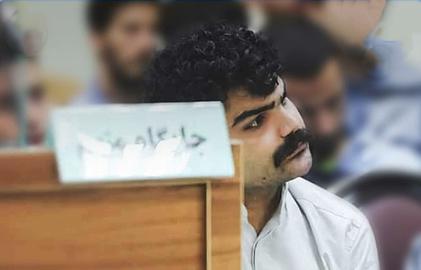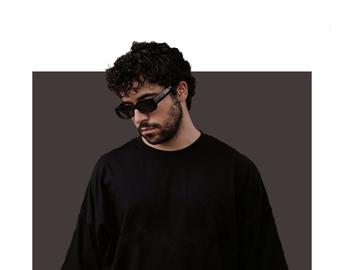Desert Dancer, a film based on the story of Afshin Ghaffarian, an Iranian young boy who dreamt of becoming a dancer despite the Islamic government’s ban on dance, launched the Ischia Global Film & Music Fest last week in Italy.
The film, Starring Freida Pinto (Slumdog Millionaire) and Reece Ritchie (Prince of Persia), recounts Ghaffarian’s determined underground rise as a dancer in Iran, using videos on YouTube, also banned, to teach himself.
Today Afshin lives in Paris and runs his own successful dance company, Réformances, but as a young student in Iran, his path to dance was littered with obstacles. At university he started an underground dance company with friends and practiced in secret.
One day they chose 15 spectators, including professors from his university, and bused them to a secluded spot in the desert 50km outside of Tehran. They performed the experimental dance that they had rehearsed for months in the middle of nowhere to a desert audience, an experience that later lent inspiration to the film’s title.
Ghaffarian tells IranWire that as a young student of theatre at the Azad University Faculty of Art and Architecture in Tehran, he and his friends were influenced by a number of international dancers – Antonin Artaud in France, the American Julien Beck, Eugenio Barba in Denmark, Tadashi Suzuki in Japan and especially the Polish dancer Jerzy Grotowski, whose experience in Poland was particularly relevant.
Grotowski was a director who defied heavy censorship to which professional 'theatres' were subject in Poland at that time. Grotowski’s condition in the late 1950s and 1960s was inspiring to Afshin, as a modern example of performers exploring new capabilities and modes of expression in a climate of heavy-handed state interference.
Despite the state ban on dance in Iran, Ghaffarian describes developing as a dancer under those constraints amongst many Iranians who found ways to aesthetically follow and engage with an evolving culture of dance around the world.
‘My experience cannot be reduced to one geographical latitude which is Iran in this case.’ he says. ‘I continue to do in France what I started in Iran. In Iran our experience was linked to others’ experience around the world, although they were also marginal in their own society.’
Beat him Artistically
Desert Dancer is set against the backdrop of Iran’s tumultuous 2009 summer of protest, when the streets of Tehran erupted in the most intense demonstrations seen after the Revolution, with riot police officers using batons and tear gas against opposition demonstrators who claimed that President Mahmoud Ahmadinejad had stolen the presidential election.
Amidst that political turbulent, Ghaffarian, who had followed his passion for artistic freedom as a young man, joined a wider movement demanding greater social and political freedoms.
The film follows his arrest at a demonstration and beating at the hands of a Basij paramilitary group. ‘My identity papers described me as an actor. The commander in charge said, ‘if you're an artist we'll beat you artistically,’’ he recalls.
It was after his release that Ghaffarian fled Iran and travelled to Germany and later to France.
In one of his early performances in Germany he appeared on stage with a green wristband in a show of support for the opposition Green Movement, holding one hand over his mouth to symbolise the country's repression of free speech and forming a victory sign with the other.
I asked him if he sees his dance as a vehicle for making political statements.
‘It depends of what we mean by political. Political in the sense of the political party, No, but political in the sense of life itself, Yes,’ he says.
‘I don't belong to that so-called ‘opposition’ outside of Iran or any Green, White, Red section. What I say should not be used for making a political statement against a regime. The Islamic Republic of Iran is certainly not a flawless system, but I recognize it as the legitimate political entity of Iran. I am supporting any peaceful democratic social movement in the world, including Iran.’
The Shout
Storytelling and drama figure as key elements in Ghaffarian’s work. In his first staging in France, The Shout, he moved beyond dancing and created a drama on the stage. He describes The Shout as ‘a journey through time and space, in a world of conflict,’ revealing ‘the original birth of the man in the mists of time.’
‘In many theatrical traditions all over the world and especially in Eastern culture, there is no difference between theatre and dance, actor and dancer.’ Afshin says. ‘But in Western culture, especially in the modern era, theatre and dance are often split.’
‘Eugenio Barba explains in his famous book "The Secret art of The Performer” that in many cultures we use even one word to refer to dancers and actors. I let my audience to call me whatever they like. I'm just a doer!’
The strict demarcation between theatre and dance that still holds today in France, Ghaffarian says, is one of his greatest challenges. Such unwritten restrictions and clichés, he believes, prevents dance from serving – as music does – as a universal language and vehicle of cross-cultural understanding. He says many people in France don’t recognise what he does as dance simply because it doesn’t fit within the conventional framework of ‘pure’ dance.
Another consideration, he says, is Orientalist-tinged attitudes in the West around what artists from the East should be producing.
‘An Iranian in the West should always represent the fantasy of Persia, and if he doesn't respond to this untold expectation, he might be excluded from the mainstream, simply because of lack of authenticity,’ he says.
Desert Dancer
But despite all these challenges Ghaffarian is astonishingly active. He just finished a new performance based on a novel called "Too Loud a Solitude" written by Czech writer Bhumil Hrabal. He also recently published Café des Réformances, a book in French with his sociologist friend, Baptiste Pizzinat.
He is working on an article about his career and experience in Iran as well as in France which will be published in a French magazine "6Mois" in September.
But what is still taking a lot of his energy is the film, the Desert Dancer, for although the film is based on his life story, Afshin feels he is drifting away from it.
‘Although this film is inspired by a true story which is obviously a part of my life but my today's true story of life is not based on this film.’ He told IranWire, ‘I cannot reduce my whole life and my whole experience to this film. The film is not a documentary of my life but it is a fictional film and like other fictional film there are some fictional scenes in order to create some dramatic effect.’
Ghaffarian now views the conditions for dance in Iran differently, and believes the current restrictions are not unsurpassable.
‘I don't think and see the world including Iran in the same way as five years ago. That doesn't mean that I've changed completely and ignore the problems in Iran, but I just read my own story with a new vision and in a different way.’
Ghaffarian believes what makes dance forbidden in Iran is an erroneous official categorisation. Chess was made illegal when the Ayatollah Khomeini changed its category from gambling to sport. Ghaffarian hopes that if dance can be classified in some manner as a form of contemporary art, it can evade state restrictions and flourish.
‘It might seem confusing but today I think dance is not really forbidden in Iran, although I was saying the contrary five years ago. I am trying to introduce a new debate around dance issue in Iran, to create a new comprehension of what contemporary dance can mean within Iranian society.’
visit the accountability section
In this section of Iran Wire, you can contact the officials and launch your campaign for various problems






























comments